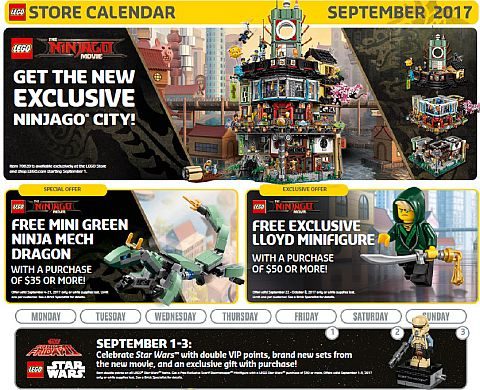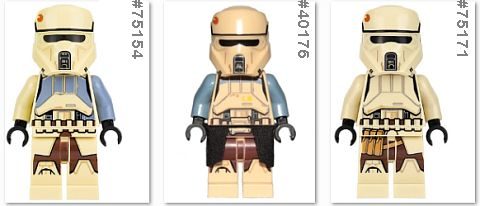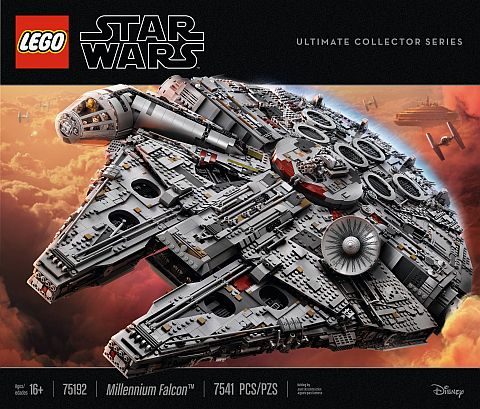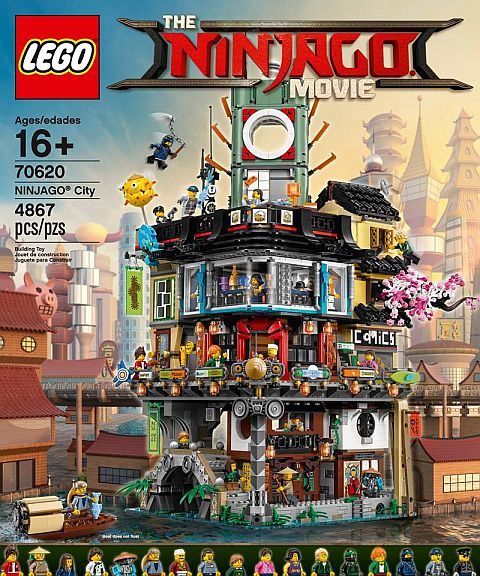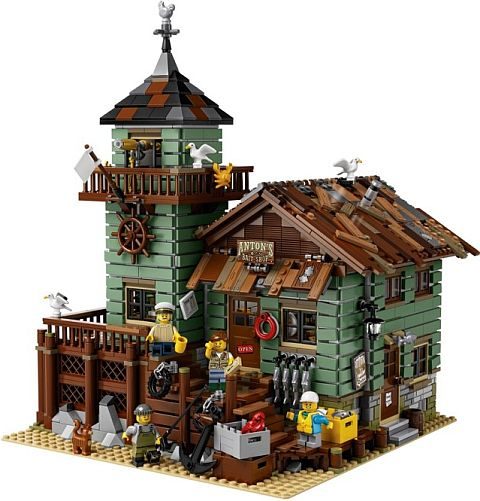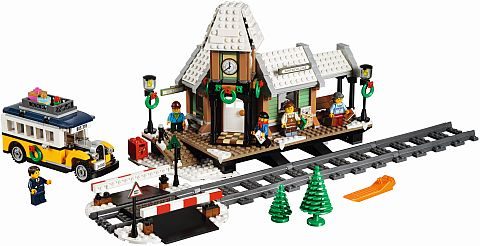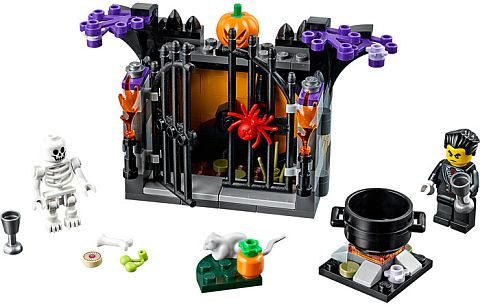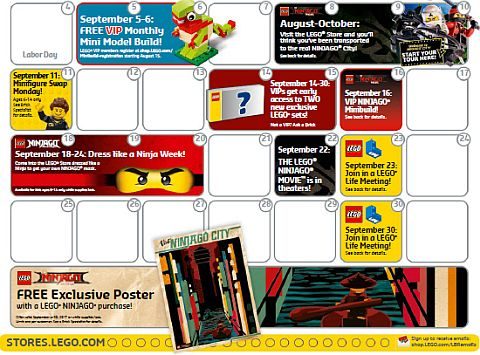While the official release of LEGO Ninjago Movie Ninjago City was the 1st of September, LEGO VIP members had early access to the set starting in mid-August. This is the largest LEGO Ninjago set to date, and one of the most interesting LEGO sets of all time. LEGO fans, who already had a chance to build Ninjago City, have been raving about the great building experience and fantastic details and play-features. So let’s take a closer look, and also check out how the set fits with the LEGO Modular Buildings. 🙂
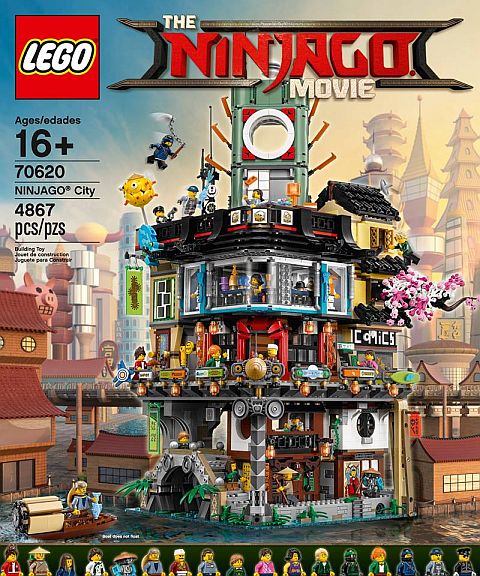
To begin, here is the official description of the set: Enjoy endless role-play fun in Ninjago City, a hugely-detailed 3-level model connected by a sliding elevator. Level 1 features a traditional fish market, house, a bridge over a stream, and a fishing boat. The second level has a modern fashion store, comic book store, crab restaurant with ‘crab-grilling’ function and cash-dispensing ATM. The vertical city is topped off with Lloyd Garmadon and Misako’s apartment, a rooftop sushi bar with sushi conveyor belt, and a radio tower. This action-packed set from The LEGO Ninjago Movie also includes 16 minifigures: Jay, Kai and Lloyd Garmadon (each with new-for-August-2017 high school outfit decoration), Green Ninja Suit, Misako, Jamanakai Villager, Sally, Ivy Walker, Konrad, Severin Black, Tommy, Guy, Juno, Mother Doomsday, Shark Army Gunner and Officer Noonan, plus Sweep the maintenance robot. Ninjago City measures over 24” (63cm) high, 12” (31cm) wide and 16” (42cm) deep. 4,867 pieces. Price: $299.99 – BUY HERE
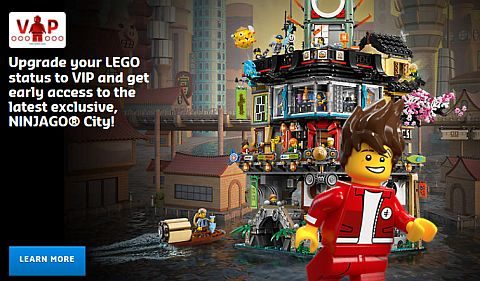
As you can see, #70620 LEGO Ninjago Movie Ninjago City is like a very busy Chinatown with little shops, hidden passages, and surprising details everywhere. But there is a method to the madness, and the model actually breaks down to three distinct levels that can be separated the same way as the LEGO Modular Buildings, with each level lifting off for easy play.

Level 1 features a bridge, sewer outlet, stream with translucent-blue and translucent-green water elements, sliding elevator with room for a minifigure, traditional fish market with fish and crab elements, house with dining room and bedroom with sliding screen doors and foldout ‘solar panels’, Sweep the maintenance robot’s service station with assorted tool elements, and a taxi stand with telephone element.
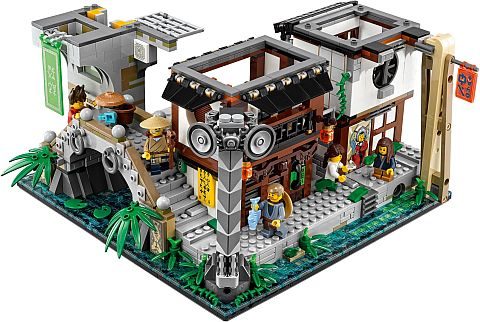
Level 2 features a modern fashion store with 2 mannequins and assorted Ninjago product elements, a construction site with a bonsai tree, a comic book store with brick-built sign, cashier desk, comic book stand with assorted elements including collectible Ninjago training cards, a crab restaurant with brick-built crab entrance sign and oven with ‘crab-grilling’ function, a cash-dispensing ATM, 15 bank note elements (ATM can dispense up to 13), and a movie poster display stand with 4 interchangeable movie poster elements.
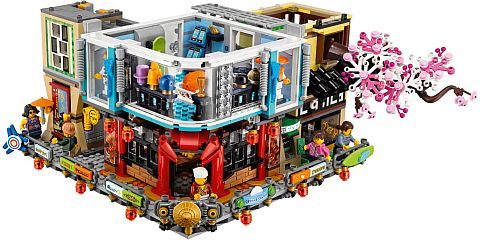
And Level 3 features a radio tower, modern rooftop sushi bar with sushi conveyor belt function and brick-built food, bathroom with sliding door, and brick-built puffer fish and squid sculptures, Lloyd Garmadon and Misako’s apartment with an opening window, bunk bed, kitchen unit and attic space for the Green Ninja Suit minifigure.
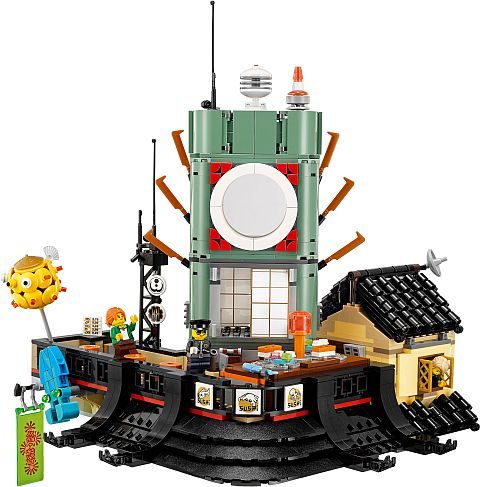
As #70620 LEGO Ninjago Movie Ninjago City comes with almost 5K pieces, expect this to be a very long build – somewhere around 10-12 hours. It is best to break up building large sets like this to several days, so you can really savor the experience and appreciate the building techniques without getting too tired. The parts are broken up numbered bags, so you don’t have to dump everything out at the same time and risk loosing small parts. Clear off a large table (or some floor space if you are a floor builder like me), put on your favorite music or audio-book, and enjoy the process!
And now the burning question many LEGO fans have; how does Ninjago City fits together with the LEGO Modular Buildings? The set sits on a 32×32 stud baseplate just like the Modulars, it comes with the standard LEGO Technic brick and pin connectors as attachment points to the LEGO Modular Buildings, and it does look similar in size. So it should fit, right?
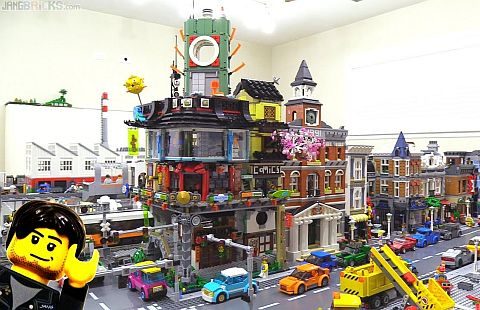
Well, yes and no. Yes, in the sense that Ninjago City can easily connect to the LEGO Modular Buildings as a corner structure with the above-mentioned standard connection points. And no, in the sense that the elevated sidewalk and small canal don’t really line up with anything that comes with the LEGO Modular Buildings. This section would need some creative rework to make it blend in realistically. Also, as you will see in the video below, Ninjago City is very-very tall. Much taller than any of the LEGO Modular Buildings. You may be okay with this, or you may want to modify the structure, so it doesn’t tower over the other buildings so significantly.
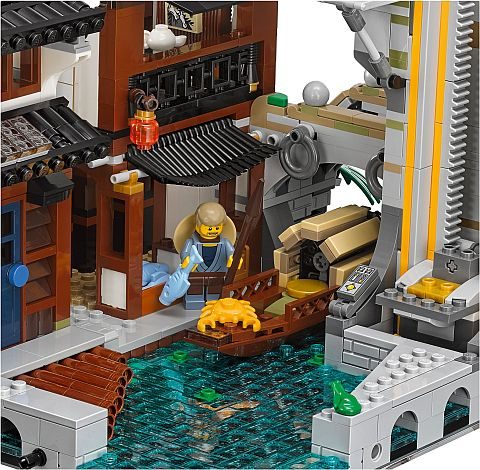
In the video-player below, I have included three videos for you, which should help you decide if you would like to add this set to your collection. The first one is a full tour and review of the set by JANGBRICKS. In the second video, JANG shows you in more detail how the set fits together with the LEGO Modular Buildings, and the third video is a speed-build of the set, which can be helpful if you are curious about how certain building-techniques are done, and how the whole set comes together.
#70620 LEGO Ninjago Movie Ninjago City is definitely a phenomenal and very interesting set. You may consider displaying it separately, or with some creativity, you can also add it to your LEGO Modular Buildings collection. I’m sure LEGO fans will be working on ideas and solutions in the upcoming months, so keep an eye out for some interesting customizations.
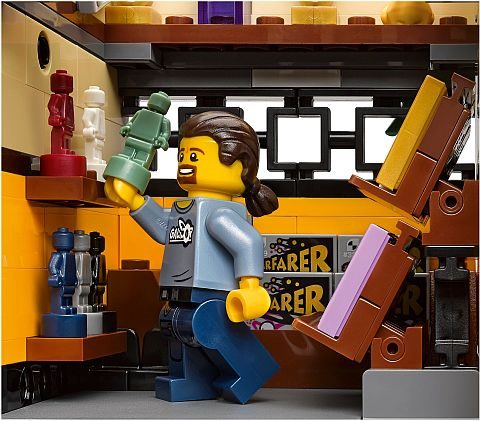
As you have seen in the video-review above, Ninjago City comes with 16 minifigures: Jay, Kai and Lloyd Garmadon (each with new-for-August-2017 high school outfit decoration), Green Ninja Suit, Misako, Jamanakai Villager, Sally, Ivy Walker, Konrad, Severin Black, Tommy, Guy, Juno, Mother Doomsday, Shark Army Gunner and Officer Noonan, plus Sweep the maintenance robot. Note that pretty much all of these minifigs are very useful in a wide variety of settings. A wonderful line-up all in all!
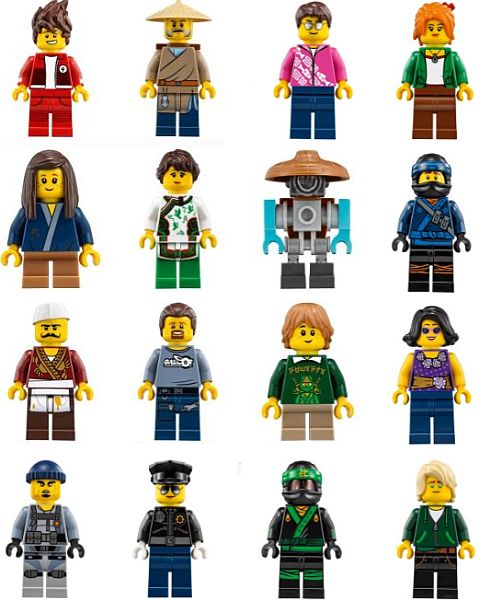
I would also like to address the price of the set; 4,867 pieces for $299.99 is only 6 cents/piece. That’s the lowest we have ever seen on a newly released set! Even if you don’t care for the building, just for the parts and minifigs the set is totally worth it. In fact, the entire collection related to The LEGO Ninjago Movie has an unusually low price, with exceptionally great sets. You can find them all under the LEGO Ninjago Movie section of the Online LEGO Shop.

So what do you think? Are you excited about the #70620 LEGO Ninjago Movie Ninjago City? And are you planning to get it? Do you think it fits well with the LEGO Modular Buildings? Feel free to share your thoughts and discuss in the comment section below! 😉

And you might also like to check out the following related posts:
- LEGO Ninjago City Available Now & More!
- LEGO Ninjago: Wu’s Teas MiniEpisodes
- The LEGO Ninjago Movie Collectible Minifigs
- The LEGO Ninjago Movie – Ninjago City Coming!
- The LEGO Ninjago Movie Website & More!
- The LEGO Ninjago Movie New Trailer & More!
- LEGO Ninjago Movie Contest & New Sets!
- LEGO Ninjago Hands of Time Sets Review


